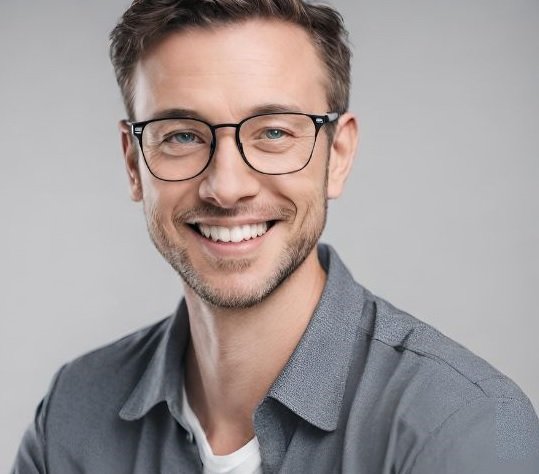Do you ever wonder if magic mushrooms can develop mold?
In this article, we'll delve into the factors that can contribute to mold growth on magic mushrooms, the health risks associated with consuming moldy mushrooms, and how to identify signs of mold contamination.
Additionally, we'll provide you with helpful tips on preventing mold growth and safely handling and storing magic mushrooms.
Stay informed to ensure a safe and enjoyable psychedelic experience.
Key Takeaways
- Moisture and excess moisture can encourage mold growth on magic mushrooms.
- Proper humidity levels, adequate air circulation, and temperature control are important in preventing mold growth.
- Moldy magic mushrooms can pose health risks such as allergic reactions, respiratory issues, digestive problems, and exposure to harmful mycotoxins.
- Signs of mold contamination on magic mushrooms include fuzzy or discolored patches, slimy or sticky texture, and the potential production of harmful mycotoxins.
Factors Affecting Mold Growth on Magic Mushrooms
To understand the factors affecting mold growth on magic mushrooms, you should be aware of the conditions under which mold thrives. Mold requires three key elements to grow: moisture, warmth, and a food source. For magic mushrooms, these conditions are often met during the cultivation process.
Moisture is essential for mold growth, as it provides the necessary environment for spores to germinate and spread. If the mushrooms are grown in a damp or humid environment, the excess moisture can encourage mold growth. It's important to maintain proper humidity levels and ensure adequate air circulation to prevent the buildup of moisture.
Temperature also plays a crucial role in mold growth. Mold thrives in warm environments, with temperatures ranging between 70 to 90 degrees Fahrenheit. If the growing area is too hot, it can create a breeding ground for mold. It's crucial to monitor and control the temperature to prevent mold infestation.
Lastly, the presence of a food source is necessary for mold to grow. Magic mushrooms provide a suitable substrate for mold to feed on, especially if there are any organic materials present. Proper sterilization and cleanliness are essential to minimize the availability of nutrients for mold growth.
Health Risks Associated With Moldy Magic Mushrooms
There are several health risks associated with consuming moldy magic mushrooms. When mushrooms become contaminated with mold, they can pose significant dangers to your well-being. Here are five potential health risks to consider:
- Allergic Reactions: Mold spores can trigger allergic reactions in some individuals, leading to symptoms such as sneezing, coughing, itching, and difficulty breathing. These reactions can vary in severity, from mild discomfort to life-threatening anaphylaxis.
- Respiratory Issues: Inhaling mold spores can irritate the respiratory system and cause respiratory problems, especially in individuals with pre-existing conditions like asthma or chronic obstructive pulmonary disease (COPD). Symptoms may include coughing, wheezing, chest tightness, and shortness of breath.
- Digestive Problems: Consuming moldy mushrooms can lead to gastrointestinal issues such as nausea, vomiting, abdominal pain, and diarrhea. These symptoms can range from mild to severe, depending on the extent of mold contamination and individual susceptibility.
- Toxicity: Some types of mold can produce toxins called mycotoxins, which can be harmful when ingested. Mycotoxins can cause a range of health problems, including liver damage, neurological effects, and immune system suppression.
- Infections: Moldy mushrooms may harbor harmful bacteria or fungi, which can lead to infections in the body. These infections can manifest as skin infections, urinary tract infections, or systemic infections, depending on the specific microorganism involved.
It is crucial to always ensure the quality and freshness of magic mushrooms before consumption to minimize the risk of encountering mold and its associated health hazards.
Signs of Mold Contamination on Magic Mushrooms
If you suspect mold contamination on your magic mushrooms, look for visible signs such as fuzzy or discolored patches on the surface. Mold can develop on mushrooms due to improper storage or exposure to moisture. It's crucial to identify mold contamination as consuming moldy mushrooms can be harmful to your health.
One of the most noticeable signs of mold on magic mushrooms is the presence of fuzzy patches. These patches can appear white, green, black, or even blue. The fuzziness indicates the growth of mold spores, which can spread rapidly if not addressed promptly. Additionally, discolored patches can also indicate mold contamination. If you notice any areas of the mushroom that differ in color from the rest, it's likely that mold has started to grow.
Another sign of mold contamination is a slimy or sticky texture on the surface of the mushroom. Mold can create a moist environment, causing the mushroom to become slimy or sticky to the touch. This texture is a clear indication that mold has taken hold.
It is important to remember that mold can be toxic and can produce harmful mycotoxins. These mycotoxins can cause a range of health issues including respiratory problems, allergies, and even organ damage. Therefore, if you suspect mold contamination on your magic mushrooms, it's advisable to discard them and seek out fresh, mold-free mushrooms for consumption.
Preventing Mold Growth on Magic Mushrooms
To prevent mold growth on your magic mushrooms, store them in a cool, dry place. Mold thrives in damp and humid environments, so it's crucial to create conditions that are unfavorable for its growth. Here are five effective strategies to prevent mold contamination on your magic mushrooms:
- Proper air circulation: Ensure that there's adequate airflow around your mushrooms. Stagnant air can create a moist environment, which promotes mold growth. Use a fan or keep them in a well-ventilated area to maintain air circulation.
- Temperature control: Mold prefers warm temperatures, so storing your magic mushrooms in a cool place is essential. Aim for a temperature range of 60-70°F (15-20°C) to inhibit mold growth.
- Moisture control: Moisture is a primary factor contributing to mold growth. Keep your mushrooms dry by avoiding contact with water or any other liquids. If they become damp, gently pat them dry before storing.
- Hygiene and cleanliness: Ensure that your hands and storage containers are clean before handling and storing magic mushrooms. Regularly clean your storage area to prevent the accumulation of mold spores.
- Proper storage containers: Use breathable containers, such as paper bags or mesh bags, to store your magic mushrooms. These containers allow for air circulation and help prevent condensation, reducing the risk of mold growth.
How to Safely Handle and Store Magic Mushrooms
To safely handle and store your magic mushrooms, it's important to follow proper guidelines and take necessary precautions.
Magic mushrooms are delicate and can easily degrade if not handled and stored correctly. First, ensure that your mushrooms are thoroughly dry before storing them. This can be done by placing them in a well-ventilated area with low humidity until they become cracker-dry.
Once dried, store your magic mushrooms in an airtight container to prevent moisture from entering and causing mold growth. It's recommended to use a glass jar with a tight-fitting lid or a vacuum-sealed bag.
Additionally, store your mushrooms in a cool, dark place to preserve their potency. Avoid exposure to direct sunlight, heat, and excessive temperature fluctuations.
Always label your container with the date of harvest to keep track of their freshness.
Lastly, handle your magic mushrooms with clean hands or gloves to prevent contamination.
Conclusion
In conclusion, it's crucial to be aware of the factors that can contribute to mold growth on magic mushrooms. Mold contamination can pose health risks and should be avoided.
By taking preventive measures, such as proper handling and storage, it's possible to minimize the risk of mold contamination.
Being vigilant and knowledgeable about signs of mold contamination is key to ensuring the safety and quality of magic mushrooms.






0 Comments